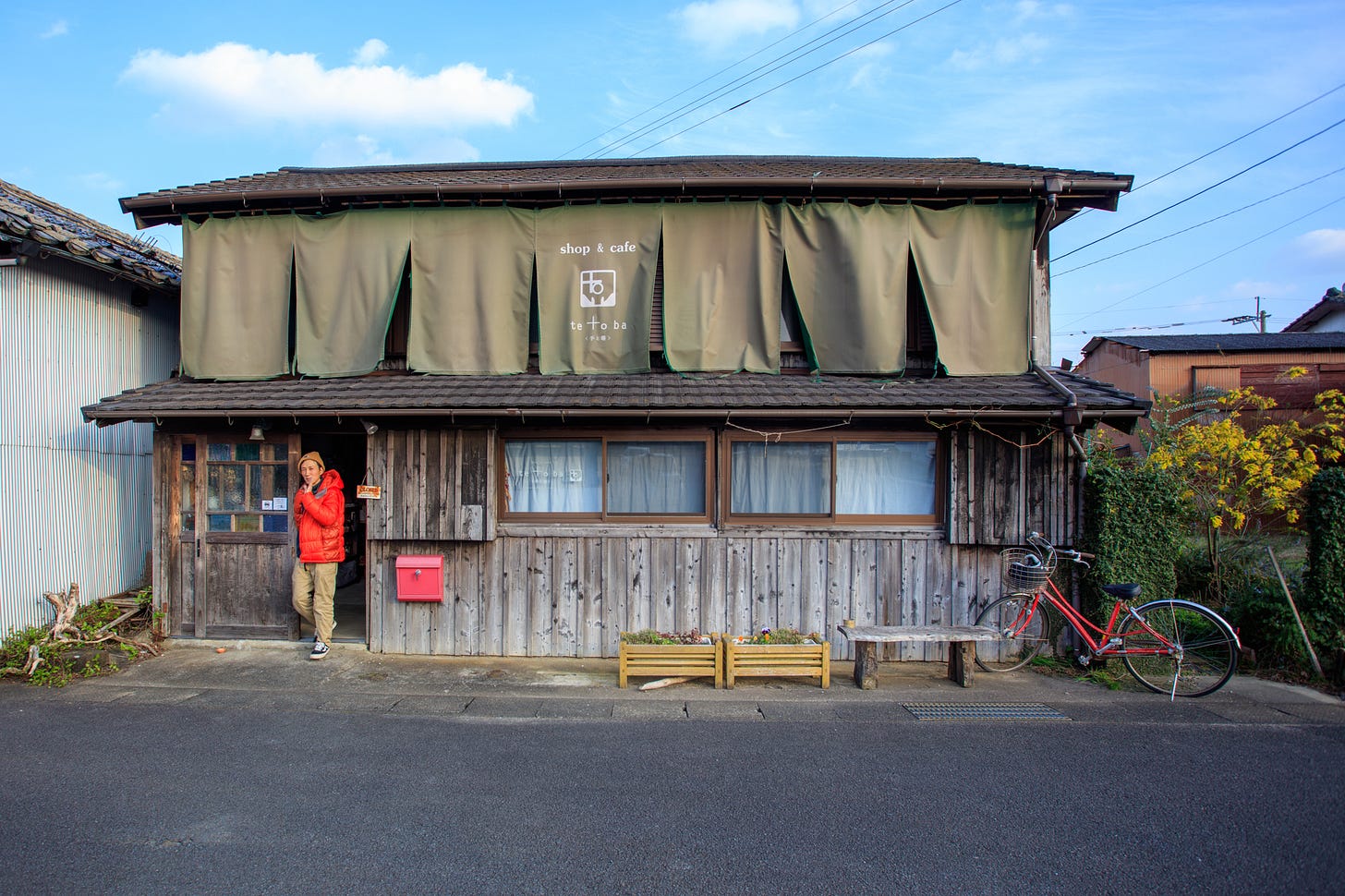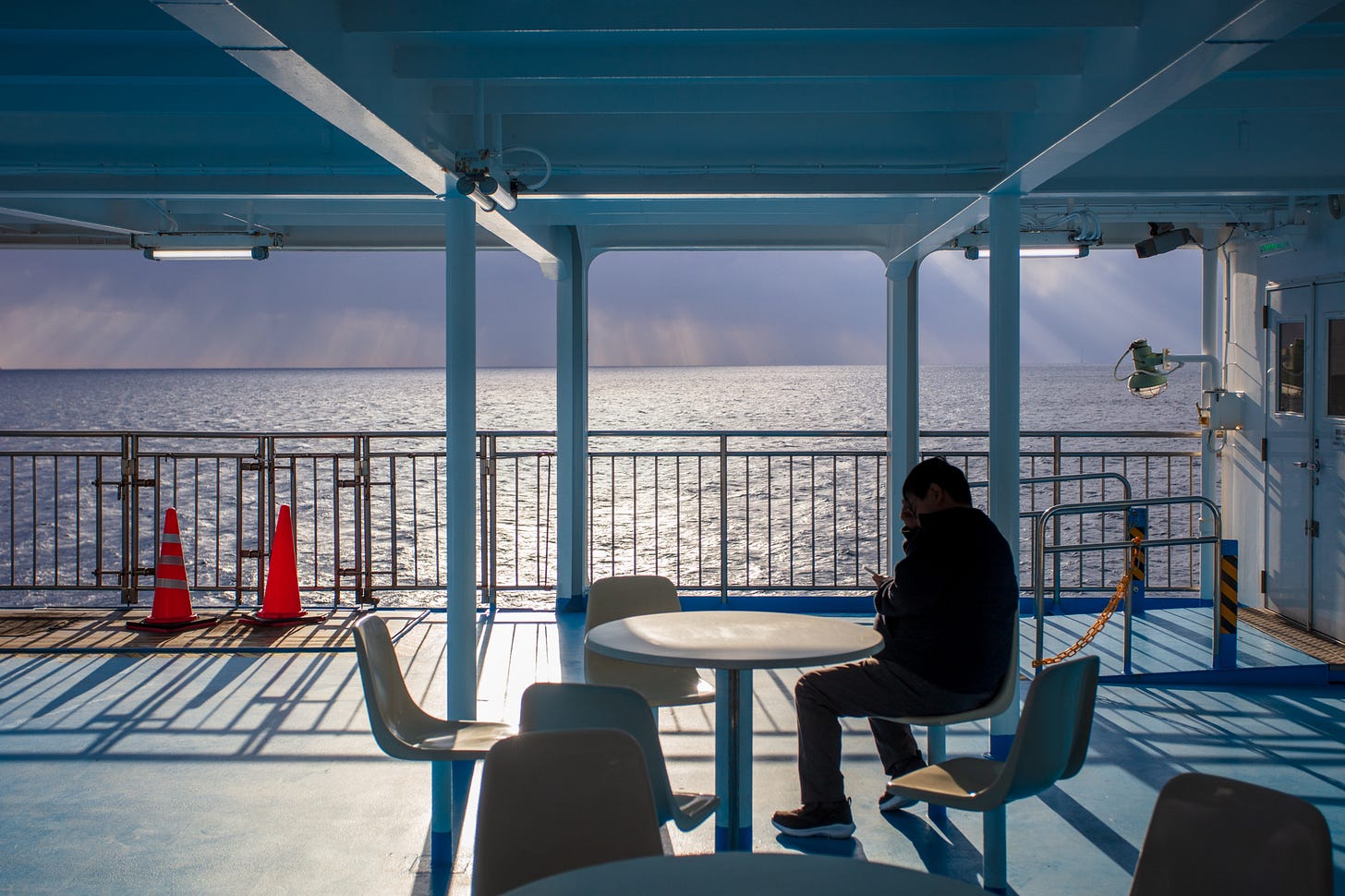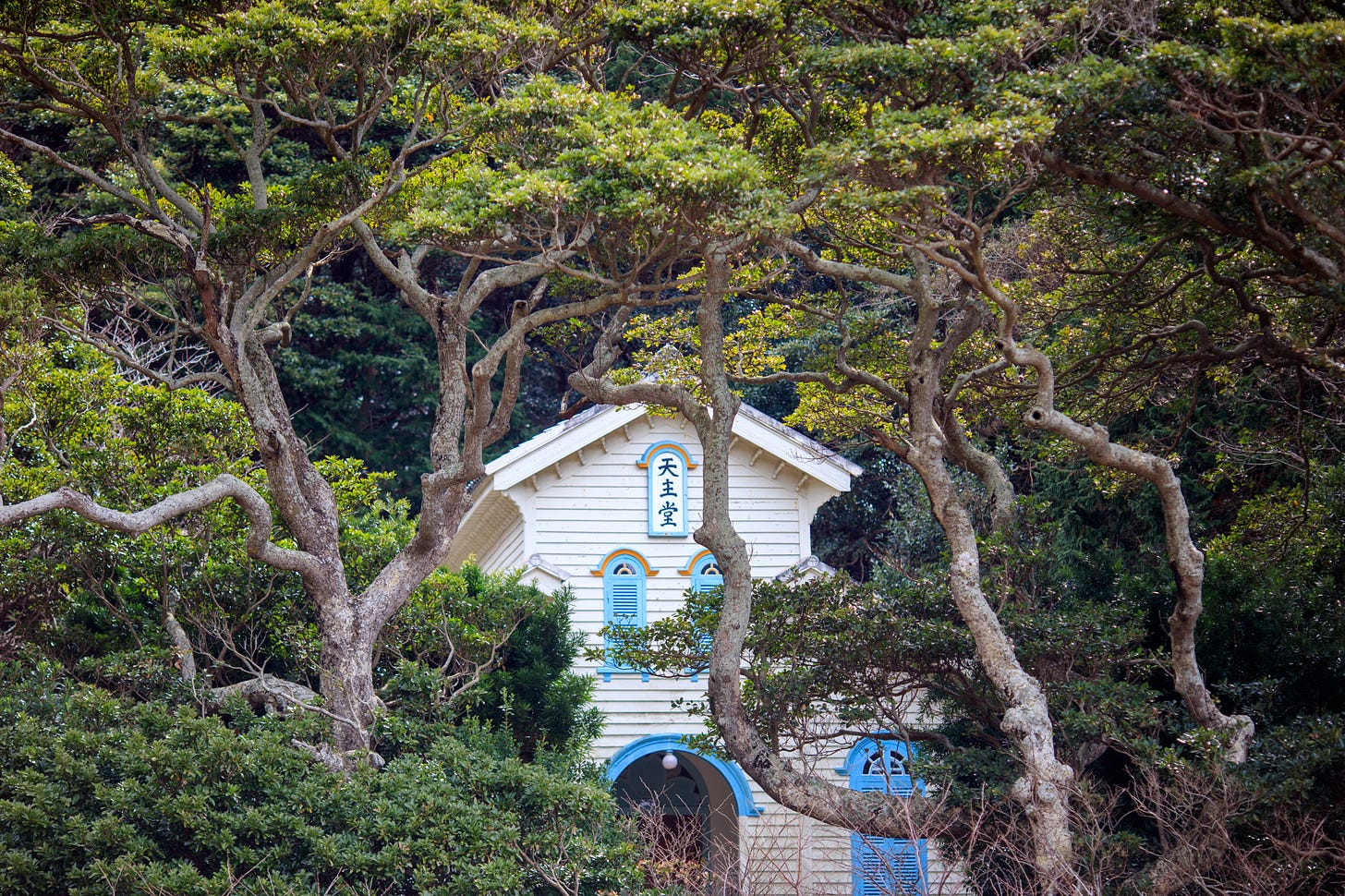Walking Goto Islands: Day 1
Travel diaries: March 2nd - arrival and visiting Egami Church in Naru Island.
Good morning,
I am writing this sitting in my room at Hostel Ta Bi To, in the tiny town of Tomie on Fukue Island, the largest of the five islands of the Goto Islands Archipelago.
I just finished my breakfast in the cafe next door, Te To Ba, which is also run by the hostel owners. The owners who moved to the Goto Islands from Tokyo right before the pandemic did an excellent job converting two traditional Japanese-style houses into a hostel and a cafe. Not only does their initiative makes Tomie a wonderful base for travelers who wish to explore Fukue and other islands of Goto by offering a cozy alternative to the standard hotels located in the center, but it also adds greatly to the liveliness of this tiny town where the cafe, with delicious Japanese style breakfast/lunch and baked goods, relaxing music and friendly owners, serves as a daily hang-out venue for the locals (who also seem to always happy to come across a foreigner visiting their modest fishing village).
This is the first of my travel diaries, which I intend to post on a daily basis during my nine-day stay in the Goto Islands. I plan to do some island hopping and walk as much as possible.
In my latest Letter from Japan, I named the Goto Islands my favorite island destination in Japan:
What I love about the Goto Islands is the opportunity to experience traditional rural fishing village life while having access to beaches on par with those in Okinawa and historical sites linked to a critical phase in Japan`s history not very well known to the outside world. When you visit an island off mainland Japan, you get to experience one or two of these facets (traditional rural life, nature/beach, and historical sites), but rarely all three.
I have been looking for an excuse to return here since my first visit in March 2022. Thanks to an email from the HR department at my office reminding me that I have some paid leave days that I must, by law, use until the end of March (music to my ears), I am now back here.
After a relatively cold winter in Tokyo, where my physical activity was limited to a treadmill in the gym, I was looking for a place where I could do a lot of walking without any planning. Hiking in the mountains was not really an option; in early March, there is still snow, and even if not, the scenery is not yet very enticing. And I did not want to visit a city. So Goto stood out as the perfect option: milder weather than Tokyo for outdoor walking, decent accommodation options for solo travelers, and low traffic on the roads (that pass through fishing villages and beautiful farmland), making it easier to use your legs for transportation rather than the bus as much as possible, and many cultural sites (mainly linked to Hidden Christians of Japan) that I could set as day's walking goal. Thanks to a reliable ferry network, there are also plenty of opportunities for day trips to smaller islands, where I can also do some walking/sightseeing. So here I am.
On this second trip to the islands, I skipped the more conventional way of traveling to the Goto Islands (flying to Nagasaki and then getting on a ferry/jetfoil or another short plane ride). Instead, to save some money and cover the distance at night to not lose daytime, and more than anything, for the experience, I first took the 5.30 p.m. Shinkansen from Tokyo Station that took me to Hakata/Fukuoka in five hours.1 I then took a taxi and caught the Taiko night ferry departing from Hakata (Fukuoka) and traveling to Fukue in eight hours through the night (with stops at Ojika, Shin-kamigoto, and Naru Islands).
Traveling on a ferry in Japan feels like time travel, and I highly recommend trying one. The small arcade featuring various video games, the carpet floors, and the velvet-covered sofas make you feel like you are traveling in a museum. But it is a very lively one - all the facilities on the ferry are enjoyed to the fullest by the passengers. When I walked onto the ferry at 11 p.m., the vibe felt like the opening hour of a bar and/or off-main street casino (not that I have ever been to one). The ferry Taiko departs daily, and I naively thought there would be very few passengers, given the more convenient and quicker modes of travel to the islands and the season. In my shared room with eight capsules, all but one were occupied.
On night ferries, you can book a private room, get a sleep capsule in a shared room (as I did on this trip), or book the floor-style seating in the common area. The price difference between a capsule bed and a common-area seating area was only 2,000 Japanese Yen. The capsule came with a TV (!), an electricity plug, and an adjustable reading light. Honestly, I was not expecting any of it.
While the first 2-3 hours of the ferry ride were very challenging due to the choppy waters, I could still get 4 hours of sleep and felt ready to start a new day when the ferry docked at Fukue Harbor a little after 8 a.m.
After putting my luggage in an automatic locker and getting some breakfast (sashimi) from the nearby supermarket, I boarded another ferry that took me to nearby Naru Island in 30 minutes. The sky was mostly cloudy with sudden bursts of sunshine occasionally, and the weather was unusually cold for the Goto Islands - icy wind, almost requiring a face mask (not that I had any).
My purpose in visiting Naru Island was to visit Egami Church, often referred to as one of the most beautiful wooden churches in the country, which I did not have a chance to visit during my first trip to the islands. The four-hour round-trip required to walk to the church from the ferry terminal felt like an ideal plan to kick off my first day on the islands.




